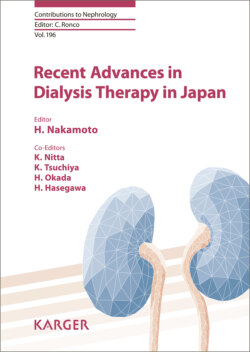Читать книгу Recent Advances in Dialysis Therapy in Japan - Группа авторов - Страница 83
На сайте Литреса книга снята с продажи.
Target GA Levels
ОглавлениеAlthough the GA value is useful as a glycemic control index in dialysis patients as described above, there are far fewer reports on the relationship between GA value and cardiovascular events or survival in dialysis patients compared with studies involving HbA1c. One study indicates that the risk of cardiovascular events is significantly greater in diabetes hemodialysis patients with GA levels of 23% or more than in those with lower GA levels [9]. Another study found that survival is significantly worse in patients with GA levels of 25% or more [10]. A 4-year observational study involving 170 diabetes dialysis patients investigated the relationship between GA value and survival. Prognosis was better in the group without a history of cardiovascular disease at the start of the observational study than in the group with such a history. Furthermore, within the group without a history of cardiovascular disease, the subgroup having GA levels of less than 20.0% had a significantly better prognosis than the subgroups having GA levels of 20% or more (which was further subdivided into 20.0–24.5% group and ≥24.5%) [11]. A study in the United States also indicated that the GA level in diabetes dialysis patients significantly correlates with mortality risk and hospitalization rate [12]. Based on these reports, in diabetes dialysis patients who do not have a history of cardiovascular events, a GA value of less than 20.0% is tentatively recommended as the target value [2]. However, in patients with a history of cardiovascular events or in whom hypoglycemia may occur (type 1 diabetes mellitus, or type 2 diabetes mellitus using insulin), if the target GA level is set to less than 20.0%, the occurrence of hypoglycemia is expected to increase. Therefore, for these diabetes dialysis patients prone to hypoglycemia, it is recommended to ease the blood glucose management criteria and set the target GA value to less than 24.0% [2].
